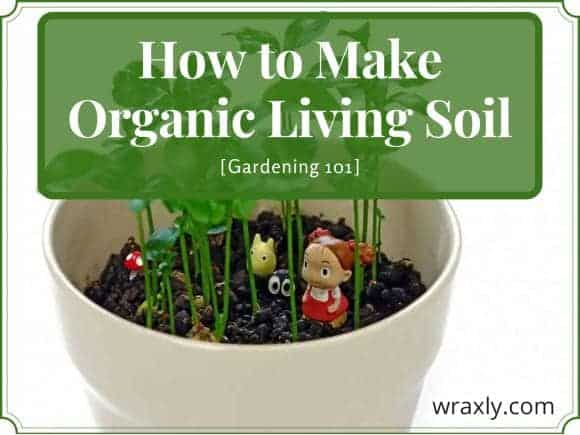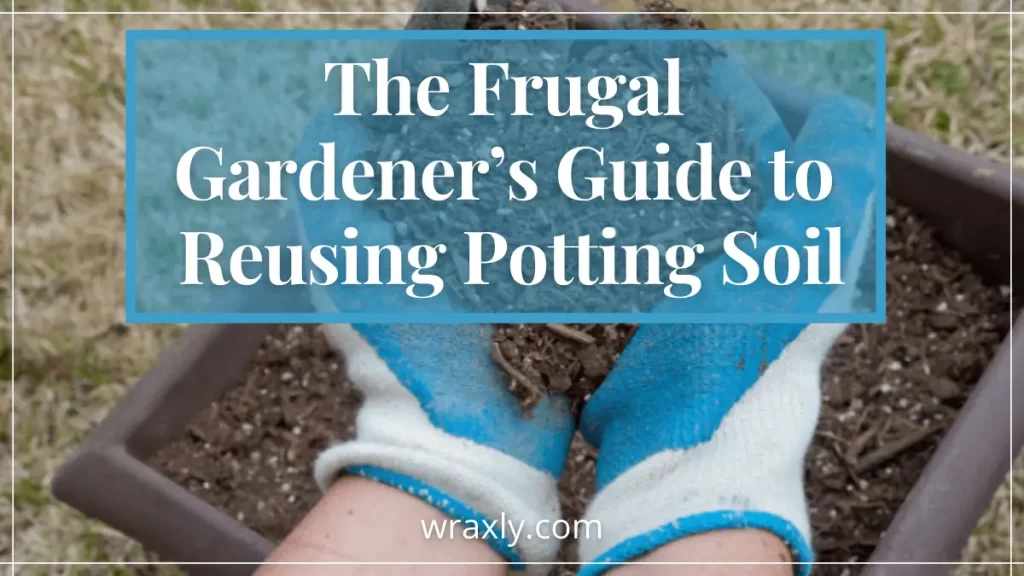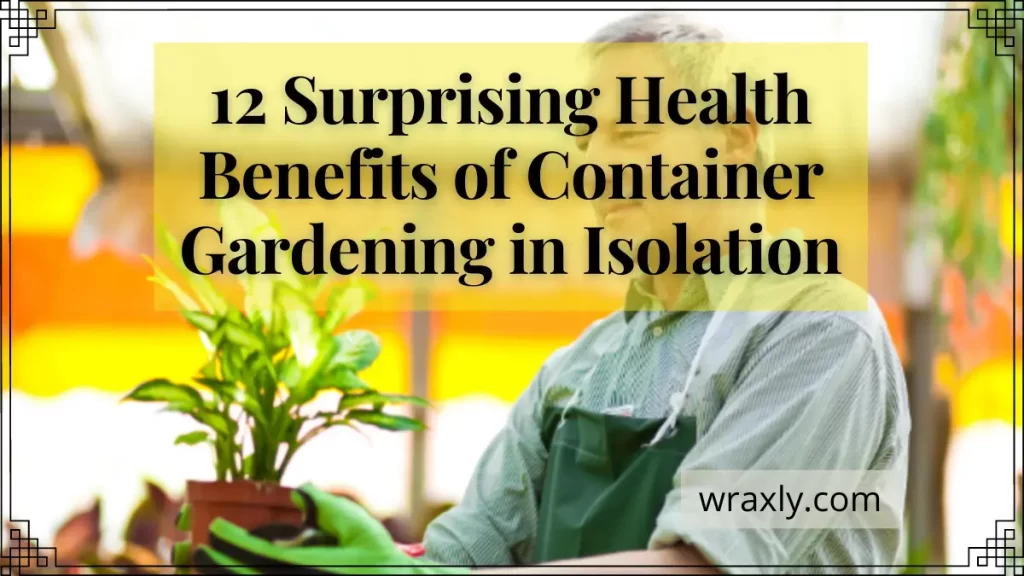While most people do not consider soil to be a living entity, the idea of creating living soil benefits us all. Living soil is a simple concept but can have an incredible positive how we raise plants. In this article, we will break down the basics of what living soil is, explore why this type of soil is so valuable, and describe how to make living soil for your own garden.

What is Living Soil?
In the simplest sense, living soil is soil that contains many living organisms within it. Many of these organisms are so small that they are invisible to the naked eye. Yet, while they are small, these microorganisms play an essential role in supporting healthy plant growth.
The microbes that live near and on plant roots facilitate the transfer of nutrients from the soil to the plant. In return, the plant provides carbon that helps sustain the microorganisms. Without these tiny lifeforms, plants would struggle to absorb the nutrients they need and fail to grow to their full potential.
There are a few different types of microbes that help to create healthy living soils. Generally, the more varieties that are present, the healthier the soil will be. Among all those types of microbes, the most important ones fall into one of these categories:
- Bacteria
- Fungi
- Actinomycetes
Despite being microscopic, these microbes appear in surprisingly large quantities in living soil. However, a serious issue arises when these life forms are not present or are present only in low amounts. Many soils are of poor quality, meaning that they have few nutrients and few healthy microbes. This deficiency leads to poor plant health.
This issue is prevalent in construction sites and farmland. Soils on building sites are often compacted and can consist of discarded construction materials rather than the organic matter that makes for healthy soil and plants. Some farming practices can deplete the microbes that live in the soil, leading to a lower crop yield and a potential food shortage.
Since healthy plants are essential to our food supply and our general quality of life, we must make our best effort to cultivate living soil. To emphasize that importance, let’s explore some of the primary benefits of growing plants in living soil.
Advantages of Living Soil
From a broad perspective, it is easy to see why someone would like to use living soil rather than the alternative. But the advantages that living soils afford a gardener or farmer are far more numerous than you might expect. To illustrate that point, here are five of the primary benefits of living soil:
- Better Soil Nutrient Content
- Improved Soil Aeration
- Decreased Soil Erosion
- Reduced Need for Fertilization
- Increased Soil Longevity
Those outcomes are desirable whether you tend to a small garden plot or produce cash crops on a large scale. Now, let’s learn more about what the benefit of learning how to make living soil will do for you and your plants.
Better Soil Nutrient Content
The most obvious benefit of living soil is that it improves the nutrient content of the soil that surrounds your plant’s roots. Since the microbes in the soil are living beings, they need a fuel source to survive. To satisfy that need, the microbes in living soil will consume the organic matter in the soil. The digestion process then transforms that matter into a form that the plants can absorb easily.
You may also be interested in… Best soil for Hydrangea
Some of the microbes live on or near a plant’s roots. After consuming organic matter, they will transfer some of the nutrients to the plant and receive carbon in return. This process benefits both the microbes and the plant. Over time, both the plants and the soil will continue to become healthier.
Improved Soil Aeration
Along with fantastic nutrient content, living soils also improve soil aeration. Soil aeration involves the presence of small air pockets in the soil. Those pockets make it easier for water and air to move through the soil and reach the plant’s roots, promoting plant growth.
Aeration supports the microbes that live in the soil and, in turn, promotes the transfer of nutrients that plants rely on. Aeration is also the perfect antidote to soil compaction. When in compacted soil, such as the kind you would find on a constructions site, plant roots struggle to move and expand. By contrast, living soil is well aerated and will allow the roots to move as they need.
Decreased Soil Erosion
Erosion is another significant hurdle that gardeners and farmers alike must overcome. Thankfully, living soil serves as the perfect solution to this issue. Compared to other soils, living soils show greater resistance to erosion. This decrease in erosion can save a lot of time and money in the long run and is one more reason why living soils are so beneficial.
Reduced Need for Fertilization
Living soil is just about the healthiest soil that you can use. For that reason, you will have much less need to amend your soil. Since soil microbes are so effective in encouraging healthy plant growth, additional fertilizer applications become far less necessary.
Once you have created a rich living soil, you can drastically reduce the amount of fertilizer you use each year. This not only reduces the time you will spend maintaining your plants, but it will also be an economical choice as your fertilizer expenses decline.
Increased Soil Longevity
This final benefit may be one of the greatest arguments for living soil. Living soils will remain healthy and fertile much longer than other soils. This benefit is especially relevant to farmers.
Some farming practices call for crop rotation. That rotation is a response to the fact that crops tend to deplete soil nutrients over time. Eventually, the nutrients will be so low that the next season’s crops will have a weak yield. However, this is not the case if you are working with living soils. When well cared for, living soil will have fantastic longevity and may even become healthier over time. This feature permits farmers to use more of their land for a longer time.
How to Make Your Own Living Soil
With the benefits of living soil well established, we will take a more practical approach to this topic. While living soil is helpful, you cannot enjoy any of its benefits if you do not know how to create it. Here are three quick steps that will help you with the process.
Create a Base Mix
The first step in creating living soil is to make a base mix. This mix should consist of three main ingredients:
- Peat moss
- Aeration material such as pumice
- Organic matter such as compost
Begin by using equal amounts of each ingredient. Over time, you can begin to alter the ratios of your mix based on what works best in your garden.
Add Nutrients
After making your base mix, you should add the major soil nutrients that plants need. Here are the six nutrients that should be present for your plants to thrive:
- Nitrogen
- Phosphorus
- Potassium
- Calcium
- Magnesium
- Sulfur
Each of those nutrients is important to healthy soil and healthy plants, do your best to make sure that each one is available in your living soil for your plants to consume.
Ensure Biodiversity
Biodiversity is one of the most critical characteristics of living soil. The more types of microbes that your soil has, the better your soil will be. For that reason, you should use only high-quality compost, as that will have the greatest amount of microbial activity. You can also add amendments like worm castings or compost tea to boost the biodiversity of your living soil.
A Few More Living Soil Tips
You now have a firm understanding of living soil and how to make it. But there are a few more insights related to living soil that you should consider. Here are a few professional tips that will help you get the most out of your living soil.
Minimize Tilling
Tilling is a common practice for loosening soil. However, this common activity has some downsides. Tilling can disturb the microbes in your living soil, preventing them from performing their essential roles. For that reason, it is a good idea to reduce or eliminate tilling if your wish to make a living soil.
Use Fabric Grow Bags
If you use your living soil for container gardening, you should use a fabric grow bag rather than a ceramic or plastic pot. Fabric grow bags are porous, allowing air to reach the soil. The presence of that air, combined with good aeration, makes it much easier for your plants to get the nutrients they need.
Test Your Soil
It is important to test your soil occasionally. Testing gives you a clear understanding of what your soil is lacking. With this information, you can amend your soil accordingly to create the ideal growing medium.
It is possible to have an expert perform your soil test by collecting a sample of your soil. These tests are comprehensive but may take some time to complete. In the meantime, there are some less technical ways to test your soil’s health.
The presence of earthworms and other insects is often a sign of good soil health. Measuring how fast water infiltrates into your soil is a good way to test drainage and aeration. While somewhat crude, these observations can give you a general idea of your soil quality.
Use Cover Crops
While most people focus their attention on their plants alone, a smart farmer will prioritize soil health as well. One of the best ways to do this is by using cover crops. When you are not growing a cash crop on a farm plot, it can be tempting to leave that area empty. However, you are far better off planting a cover crop.
Cover crops will continue the exchange of nutrients and carbon between soil microbes and plant roots. The continuation of that exchange makes it so that your soil microbes will continue to live and multiply even when your primary crops grow in another field.
Play the Long Game
When working with living soils, you should remember to remain patient. It can take several years to cultivate living soil, especially when you are starting with poor soil. The results of your efforts will not be immediate, but if you remain consistent, eventually, you will create a living soil that your plants will love. The results will be worth the wait.
Sources:
Soil Is A Way Of Life, But What Is Living Soil?
The world needs topsoil to grow 95% of its food – but it’s rapidly disappearing
Cultivators use living soil to grow healthy cannabis without pesticides, fungicides
7 Important Things When Building a Living Soil
How to Test Soil Health on Your Farm: 10 Key Methods
Related Posts

John Haryasz is a freelance writer and landscape designer. In the field of landscape architecture, he has contributed to many successful design projects throughout the country. As a writer, John specializes in creating captivating and informative web content. Through that work, he aims to share his design knowledge and promote engagement with the outdoor world.



![10 Common Container Garden Mistakes to Avoid [Beginner’s Guide]](https://wraxly.com/wp-content/uploads/2021/02/10-Common-Container-Garden-Mistakes-to-Avoid-Beginners-Guide-1200-1024x576.webp)